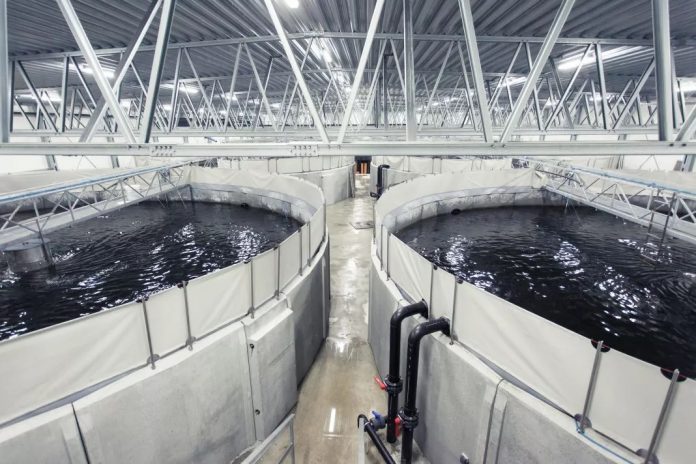But with numbers in the red every year since the start in 2011, Danish Salmon is far from an economic adventure for its investors.
Loss of €1.5 million in 2014. Loss of €2.9 million in 2015. And a deficit of €700.000 and €300.000 in 2016 and 2017 respectively.
But finally, after years of losses, in 2018 the owners of the land-based fish farm in Hirtshals, Denmark, made some profit. If only about €14.000.
After the result for 2017 was presented, chairman Erik Munk Poulsen said:
“We have had some enormous deficits in our operations. It is starting to succeed for us now because we have got our technology in order and we understand the fish’s behavior.”
The result for 2018 indicates that he might be right.

All female from now on
“The biggest challenge anyone who has tried to produce salmon on land has had is to make large fish. We have spent several years, from 2012 until today, to make fish up to four kilos,” said director of Danish Salmon, Kim Hieronymus Nielsen, to SalmonBusiness.
With only female salmon in the facility as of 2019, Danish Salmon wants to produce even larger salmon on land than they do today.
“We started at 0.1 percent maturity when we slaughtered the fish at 2.9 kilos. When we got bigger and bigger fish we saw that the percentage of fish that matured went up to one percent. There are probably not many who think that is much, but for us, going from 0.1 to one percent very much,” said Nielsen.
“We do not want it, we want zero maturity if possible. So, therefore, we go for only female salmon now. It certainly poses some other challenges, but we deal with them when they come,” he added.
12 months
The first batch of smolts with only female salmon has been in the facility of Danish Salmon for almost 12 months and is ready to be moved into the larger saltwater tanks.
“We know that in the future we will produce larger fish. We believe this is one of the ways to do it effectively,” said Nielsen.
The goal of Danish Salmon in the first instance is to produce fish up to 4.5 kilos. Today they slaughter the fish between 3.5 and 4 kilos.



